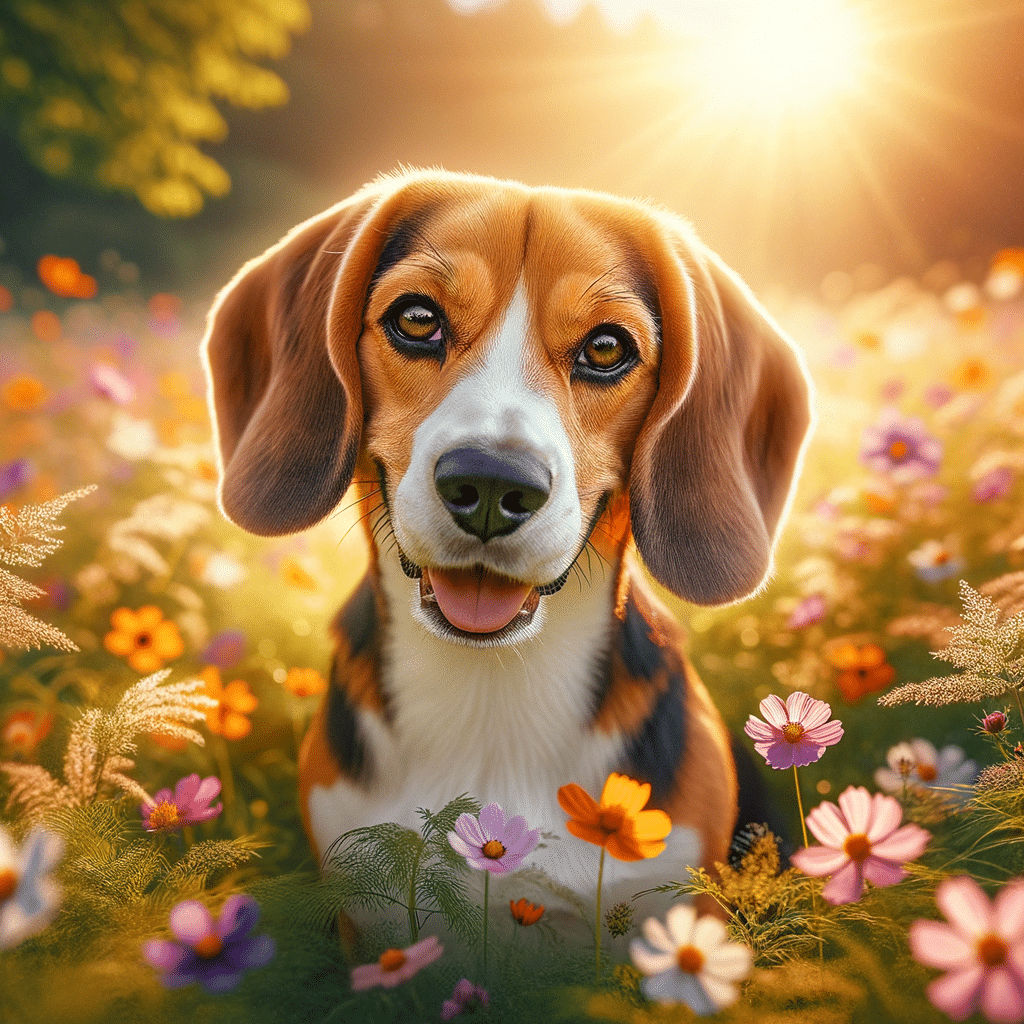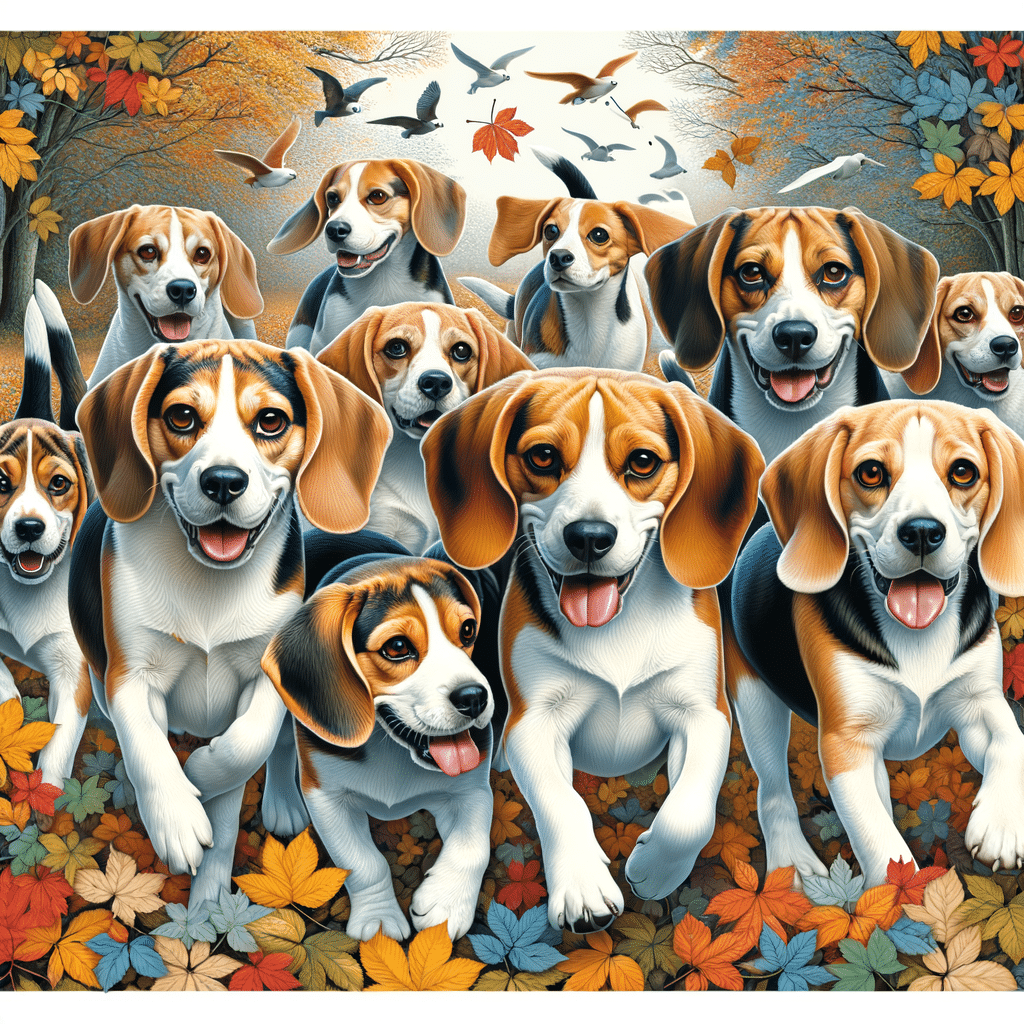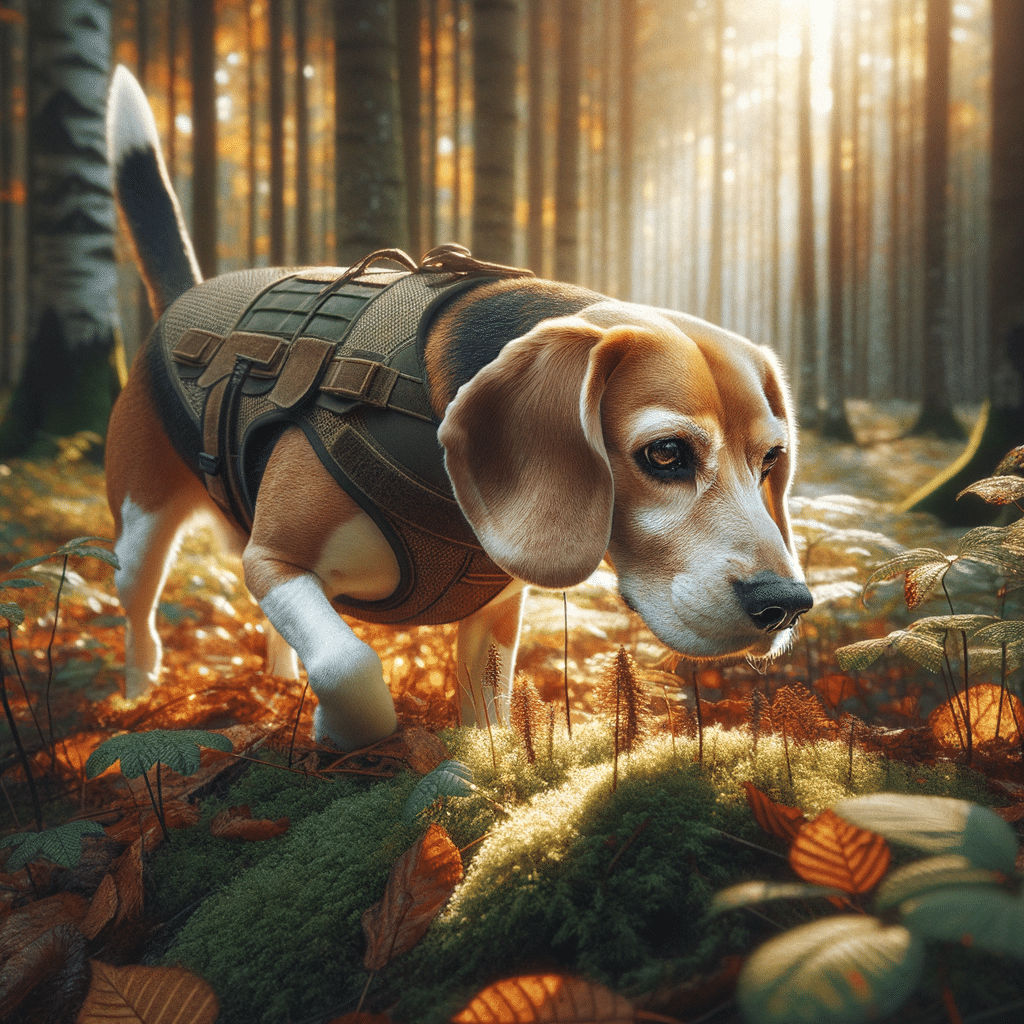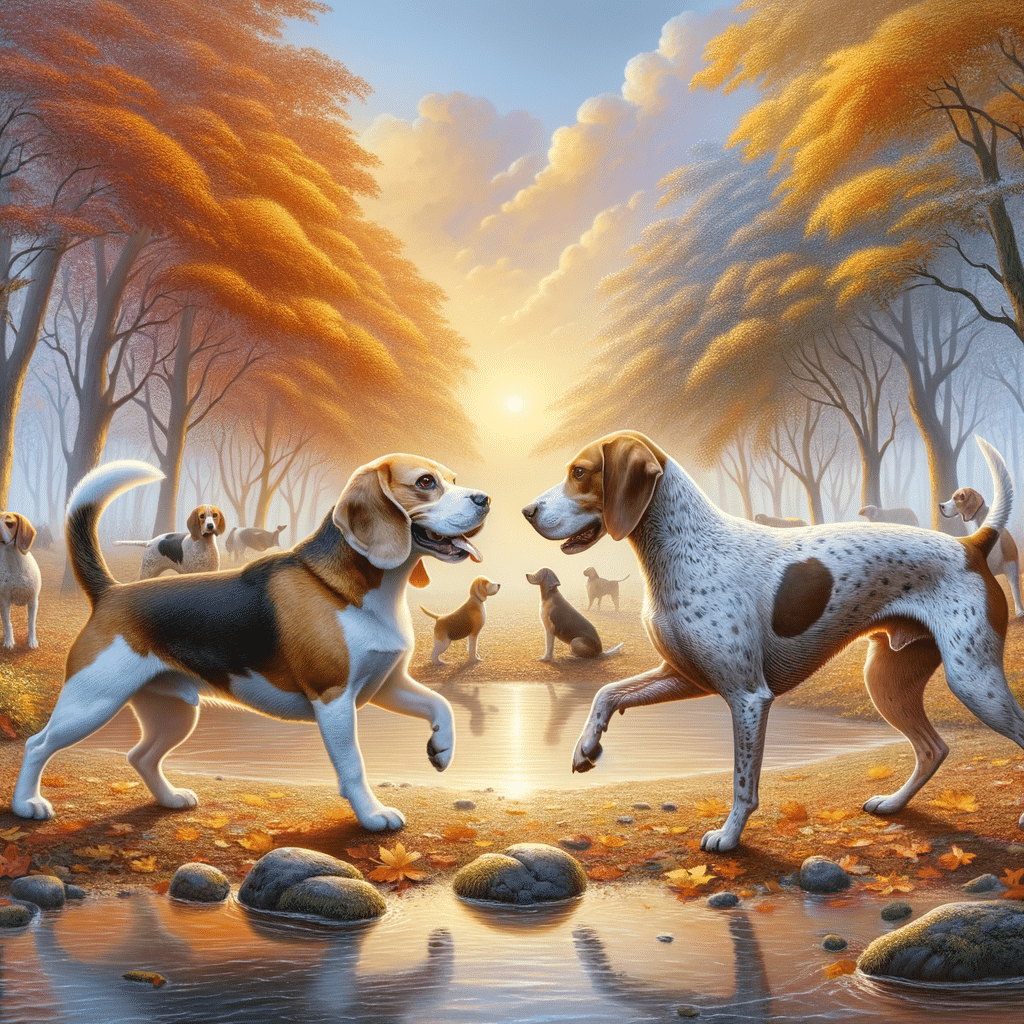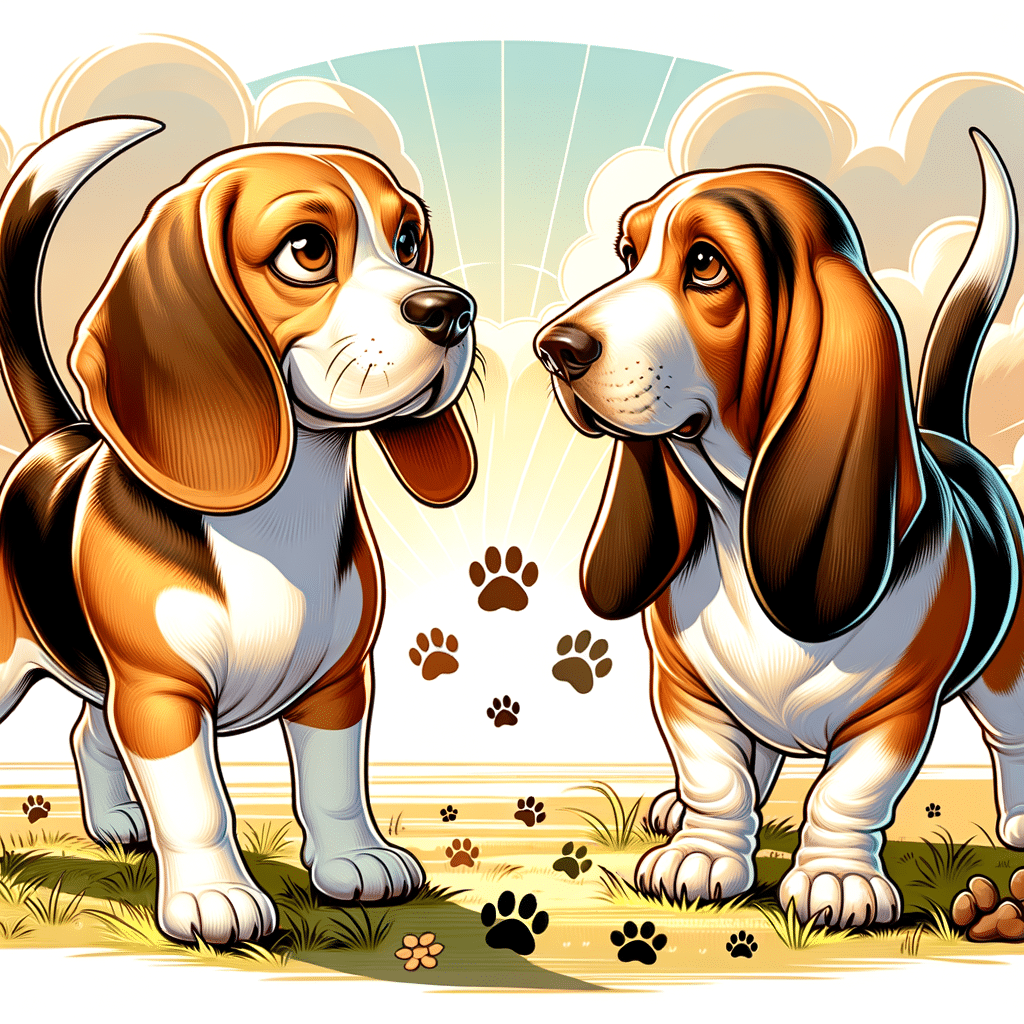When considering dog breeds that make excellent family pets, the beagle and the basset hound often come to mind. Both of these dog breeds started as hunting dogs and turned into beloved companions around the world.
In This Article
However, while they share similar ancestries and some physical characteristics, beagles and basset hounds differ in ways that potential dog owners should be aware of.
The beagle is recognized for its compact size and hardiness, fitting the profile of an active and curious canine who loves to explore. In contrast, the basset hound is more laid-back and patient, with its distinctively long body and short legs. These characteristics reflect both dogs’ histories and breeding purposes; beagles are agile hunters, and basset hounds are patient scent trackers.
Caring for these breeds requires understanding their health profiles, exercise needs, and grooming practices. Beagles typically require a lot of exercise to satisfy their high energy levels. Due to their body structure, basset hounds need less exercise but more grooming and check-ups.
Highlights
- Beagles are active and smaller, while basset hounds are laid-back with a distinctive body shape.
- Understanding each breed’s exercise, health, and grooming needs is essential for proper care.
- The beagle’s curiosity and the basset hound’s patience suit different family environments.
Breed Origins and History
Let’s trace the lineage of the beagle and basset hound. There’s a lot of history steeped in the tradition of hunting hounds across England and France. Understanding their heritage will help us understand their physical traits and behavioral tendencies.
Beagle Background
The beagle’s history begins in 18th century England. Reverend Phillip Honeywood established a breeding program for these dogs in Essex, which played an important role in developing the beagle we know today. Initially bred as scent hounds to track hares, beagles were admired for their endurance and keen sense of smell.
The modern beagle’s ancestors date back to Roman times. However, once they evolved into smaller versions known as “pocket beagles,” they became especially popular among the English gentry for hunting expeditions.
- Country of origin: England
- Ancestor breeds: Bloodhound, St. Hubert hound
- Key uses: Scent hounds for hunting (especially hare)
- Kennel Club recognition: AKC (American Kennel Club)
Basset Hound Heritage
The basset hound, which originated in France, has a legendary past that extends back to the 6th century. French friars developed this breed. Some theories suggest that basset hounds are related to the St. Hubert hound, bred with strains of old French breeds to enhance its scent-tracking ability.
Basset hounds were later refined in England, becoming infamous in royal kennels during the 19th century. The AKC officially recognized them in the late 1800s; since then, they have become a beloved pet and hunting companion.
- Country of origin: France
- Ancestor breeds: St. Hubert Hound, possibly Dachshund
- Key uses: Scent hounds for hunting (specifically slow-paced tracking)
- Kennel Club recognition: AKC (American Kennel Club)
Physical Characteristics
The beagle and basset hound are both members of the hound group. That being said, these breeds are easily recognized as different from one another due to their distinctive physical traits.
Size and Stature
Beagle
- Height: Males typically range from 14 to 16 inches, while females range from 13 to 15 inches at the withers.
- Weight: They usually weigh between 18 and 30 pounds, evenly distributed around their bodies.
Basset Hound
- Height: Both males and females can reach up to 15 inches at the withers.
- Weight: Basset hounds are heavier, from 40 to 65 pounds, and are somewhat stocky and bulky.
Distinct Features
Beagle
- Legs: Beagles possess relatively short legs compared to their body, which is why they're so agile.
- Coat colors: Their coats are commonly tricolor (black, white, and tan), but beagles come in several other color variations.
- Ears: They have large, floppy ears slightly longer than their face, but not a lot longer.
Basset Hound
- Legs: Basset hounds are notable for their short legs supporting comparatively larger bodies.
- Wrinkles: Their long faces have distinctive wrinkles and skin folds.
- Ears: Basset hounds have remarkably long and droopy ears extending well beyond their face.
- Coat colors: Like beagles, basset hounds typically exhibit a tricolor pattern, but their coats may also display other hues and markings.
Behavior and Temperament
If you’re considering beagles and basset hounds, note that both breeds are known for their friendly dispositions and family-oriented temperaments. They each have unique personality traits and ways of interacting with families and in social settings; pay attention to these to ensure a good fit with potential owners.
Personality Traits
Beagles are joyful and adventurous. They display a high energy level, demonstrated by their love for play and exploration. This breed can also be quite stubborn during training; however, their desire for food can motivate them to overcome this stubbornness. Inherently affectionate and loving, beagles have a history as pack dogs, making them cooperative companions.
On the other hand, basset hounds have a more laid-back personality; they often appear very relaxed in many settings. Though they can be independent, they remain devoted pets and have an affectionate nature. Despite their lower energy levels compared to beagles, they still share the same stubborn streak, which can present challenges during training sessions.
Family and Social Interaction
For families, both beagles and basset hounds are excellent options. They are known to be family-friendly and tend to get along well with children, displaying patience and kindness. Beagles thrive in a family environment due to their sociable and friendly nature.
Basset hounds are also affectionate with family members, and their gentle nature makes them good companions for children. However, their independent nature means they might not always want to play as often as a beagle.
Both breeds usually fare well in social interaction with other dogs due to their heritage as pack animals. However, socializing both breeds at a young age is vital to developing well-rounded behaviors and ensuring good interactions with humans and other pets.
Health and Care
Potential owners should know about breed-specific health issues and grooming needs when caring for beagles and basset hounds. These factors directly impact quality of life and longevity, so keep reading to learn more.
Common Health Issues
Beagles may experience:
- Obesity: This is because they are a high-energy breed that requires regular exercise to prevent weight gain.
- Epilepsy: This neurological condition can be managed with medication in many cases.
- Hip dysplasia: This genetic joint issue may lead to arthritis.
- Glaucoma: If not treated, this eye condition could lead to blindness.
Basset hounds are prone to:
- Ear infections: Due to their long, floppy ears, they can easily contract bacterial and yeast infections.
- Patellar luxation: This is a condition where the kneecap dislocates or moves out of its normal location.
- Hip and elbow dysplasia: These conditions stem from malformed joints and can cause discomfort or trouble walking.
- Hypothyroidism: This is a disorder of the thyroid gland, which can lead to other health problems if left untreated.
Maintenance and Grooming
For beagles:
- Brush them daily or weekly to reduce shedding.
- Ear cleaning is important to prevent infections.
- Remember to give your pet regular exercise to manage their high energy levels and avoid obesity.
For basset hounds:
- Regular grooming can manage shedding and irritated or infected skin folds.
- Take special care of their ears to help offset the potential of ear infections.
- When it comes to exercise, basset hounds enjoy walks but are less active than beagles; because of this, they don't need intense daily activity.
Frequently Asked Questions
If you still need clarification about the differences between these breeds, check out these answers to commonly asked questions. That way, you can make informed decisions about which breed to adopt for your family.
What are the main temperamental differences between beagles and basset hounds?
Beagles are known for their energetic and curious nature, often requiring plenty of exercise and mental enrichment. Basset hounds, while also friendly, tend to be more laid-back and less active.
How do beagle sizes compare to basset hounds?
Beagles typically stand between 13-16 inches tall at the shoulder and weigh around 18-30 pounds. Basset hounds are similar, ranging from 11-15 inches at the shoulder, but generally heavier due to their bone structure.
When deciding between a beagle and a basset hound puppy, what should potential owners know?
Potential owners should consider that beagles require more daily exercise and can be vocal, while basset hounds might need extra care for their ears and droopy eyes. Both breeds can be stubborn and might present training challenges, but food can greatly motivate both breeds.
Can beagles and basset hounds typically coexist peacefully in the same household?
Yes! Beagles and basset hounds can usually live together peacefully, as both breeds are friendly toward other dogs. However, proper introduction and socialization are essential for them to coexist peacefully.
What are the unique traits that make basset hounds special?
Basset hounds have an exceptional sense of smell, second only to the bloodhound. They also have a distinctive appearance with their long, droopy ears and short legs relative to their long bodies.
How does the intelligence of basset hounds compare with other dog breeds?
Basset hounds are intelligent but often guided by their scent-driven instincts, which can sometimes make training a challenge. They are known for their problem-solving abilities, especially in tracking and scent-related activities.
